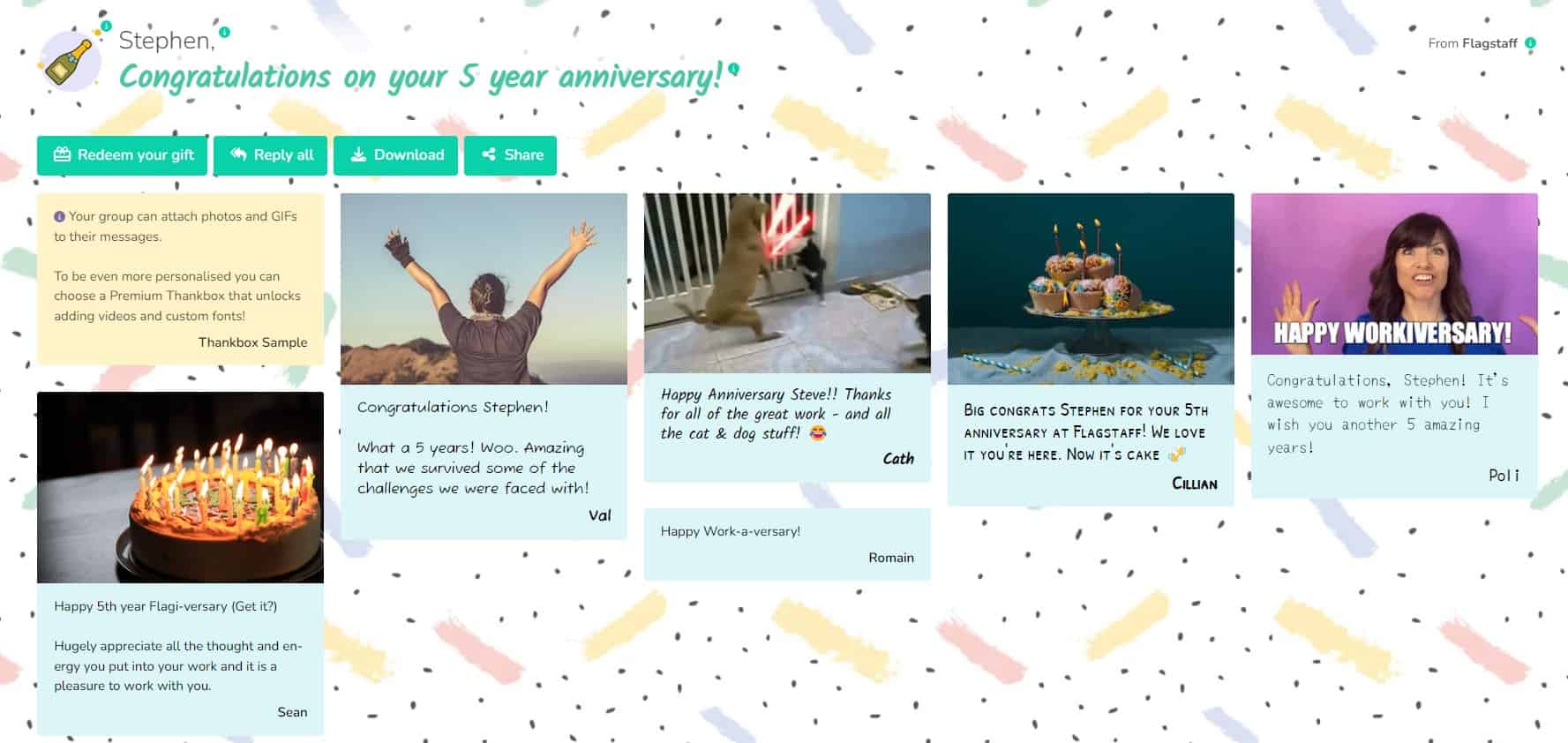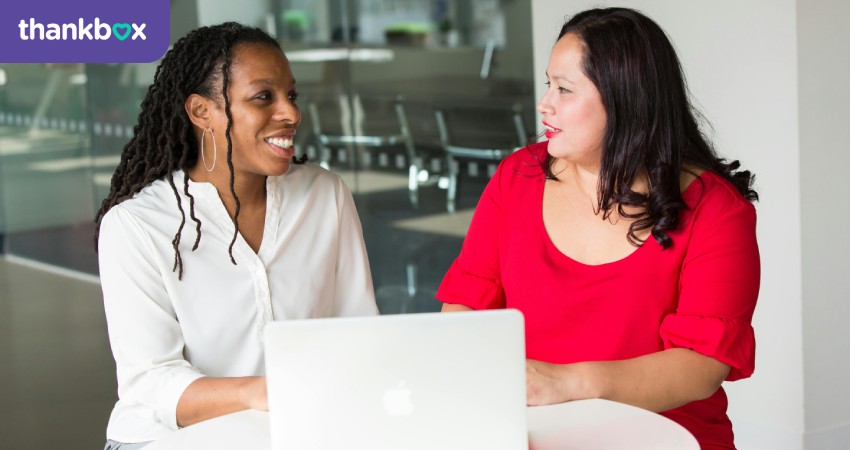New Hire Orientation: Best Practices To Make Your New Employees Feel Welcome


It’s possible to hire new employees and leave them to figure out how to navigate their new reality. But, the potential negative effects can be crippling.
Poor employee orientation causes decreased team engagement, higher turnover, and lower initial performance. So, don’t skip or wing this critical stage.
Also, new hire orientation is different from employee onboarding though they are easy to mix up. The former usually happens in the first few days or weeks of employment, while the latter tends to span several months. So basically, orientation is the initial part of the full onboarding process.
In this Thankbox guide, we’re going to share some comprehensive new hire orientation strategies to make sure your new team members get the welcome they deserve.
Let’s dive in.
What is new hire orientation?
New hire orientation involves giving a new employee the organisational information they need to excel in their role, team, and department. It generally covers:
Company procedures and policies.
Critical documents and paperwork.
Arising questions or concerns.
Also called new employee orientation, it requires an organised, company-wide process to ensure a consistent and welcoming experience for all new hires. This standardized process also helps managers and training staff stay productive in their roles while still supporting new employees optimally.
Take in and set up new employees memorably with a warm greeting card. Create a Thankbox and make every welcome a mile in the thousand-step journey towards a healthier, more productive team.
Why new hire orientation matters?
Effective new-hire orientation helps new employees start and transition into their roles seamlessly. It also contributes to higher employee engagement, retention, and productivity.
Enhanced employee engagement: A structured staff orientation program introduces new hires to the company culture and expectations right from the start. This early introduction effectively engages them, boosting their morale and breeding a sense of belonging and commitment.
Lower staff turnover: No one likes a cold or unfriendly start. So, when you welcome and support employees from their first day, they are more likely to stay with the company long-term. Plus, proper new hire orientation reduces the uncertainty and stress associated with starting a new job, leading to reduced churn and a more stable workforce.
Increased team productivity: When you equip new employees with the right tools, resources, and knowledge during orientation, they can quickly become productive team members. This accelerated ramp-up period also ensures that new hires can contribute effectively to company projects and goals.

7 new hire orientation best practices
New hire orientation has numerous benefits and the following best practices will help you tap into them, setting the foundation for long-term employee success, satisfaction, and retention.
1. Create an orientation checklist and schedule
A comprehensive orientation checklist and schedule helps you stay on track and ensures you don’t miss any critical steps. This plan requires the input and collaboration of key stakeholders like supervisors, HR managers, and IT team members.
The list should include tasks like completing necessary forms, meeting key stakeholders, and training. At the same time, each item should have a corresponding timeline so the orientation doesn’t drag on too long.
Give a copy of the checklist and schedule to the new hires so they can follow along and track their progress.
New Hire Orientation Checklist:
Employee information
Documents and forms
Welcome and introductions
Office or workspace access and tour
Workstation setup (remote or in-person)
Software and apps
Training
Others (company ID, corporate credit cards, etc)
2. Automate paperwork
Make it easy for new employees to complete and submit paperwork by automating the process.
From legal forms to internal documentation, and NDAs, making all documents available for digital access and completion also:
Reduces potential errors.
Ensures quick, unified access.
Eases the burden of physical document management.
3. Assign an onboarding buddy
Starting a new job can get lonely, especially without knowing anyone in the company. Pairing new employees with onboarding buddies gives them a go-to person for their questions and concerns, easing their transition.

Ideally, these buddies should be colleagues or peers instead of managers as they can show new hires the ropes and share knowledge without the awkwardness or discomfort of asking “stupid” questions.
Also, choose buddies who are high-performers and excited about their own jobs so they can share insights freely and serve as positive influences on the new hire.
4. Make the first day unforgettable
A memorable first day sets the tone for a successful employee experience. Make new hires’s first day one to remember by following these steps:
Start the orientation process early.
Schedule one-on-one time between them and their line manager.
Introduce them to their team members and prompt them to schedule meet and greets themselves.
Welcome them warmly with a group card, onboarding packet, and company swag.
Take in and set up new employees memorably with a warm greeting card. Create a Thankbox and make every welcome a mile in the thousand-step journey towards a healthier, more productive team.
Give them an office or workspace tour.
Take them out for a team lunch.
5. Share company culture details
Clearly communicating your company culture details helps new hires understand the environment they are joining in depth. These include core values and personality traits needed for employee success, as well as team dynamics that require adapting to.
Good culture alignment eases the integration process for new staff members, enhancing job happiness and satisfaction. It also aids productivity and effective collaboration.
6. Provide interactive training materials
An interactive learning management system (LMS) or employee training platform can make orientation more engaging, enjoyable, and effective.
Other interactive training materials like slideshows and live presentations also help new hires grasp critical information and skills quickly, ensuring they are well-prepared to perform their roles.
7. Share a clear path for career advancement
Outlining the career advancement opportunities within your company shows a commitment to employee growth and development. Personalised journey maps also help new hires visualise their career trajectory, understand how promotion works, and stay motivated.

These resources serve as clear guidelines on goals and OKRs that new hires need to achieve to progress to the next level.
8. Ask for feedback to improve the process
Collecting feedback on your orientation process from new hires gives you valuable insights into its effectiveness. With this information, you can continuously revamp your orientation steps, ensuring it meets the most critical new employee needs.
The timing for feedback collection is crucial so gather feedback:
Shortly after the orientation to capture fresh impressions.
From older team members too to identify the most memorable aspects of your orientation program.
Ask questions about areas of improvement, onboarding challenges, standout initiatives, and needed tools or resources. Keep them consistent for all new staff members for accurate assessment and adjustment.
Deliver memorable employee orientation experiences with Thankbox
Want to make your new hires feel welcome and well-valued? Try Thankbox.

Thankbox lets you create personalised group digital cards—with messages from multiple team members—to celebrate new hire arrivals. Make your orientation process even more unforgettable and heartwarming by including digital gift cards and flower deliveries.
Beyond welcoming new employees, Thankbox is also great for celebrating job milestones and work anniversaries.
What’s more? Thankbox is eco-friendly as every card is completely digital, contributing to lower CO2 emissions, and donating a portion of each purchase to tree planting initiatives (we’ve planted over 15,000 trees so far!)
Create a Thankbox today and make new hires glad they accepted your offer.
Images: Cover | Men doing fist bump | Multiethnic males looking through papers | Woman in white blazer talking on the phone





